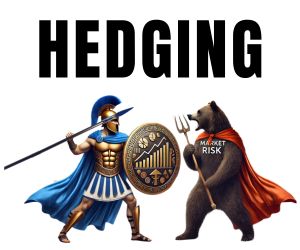CURRENCY PEGS AND THEIR IMPACT ON FOREX
A currency peg ties the value of one nation’s money to another, most often to the U.S. dollar or the euro. Pegs aim to bring stability and predictability, helping countries manage trade and investment flows. Yet beneath that stability lies tension: when fundamentals shift, defending a peg can become costly, and breaking it can trigger sharp market moves. For traders, understanding how pegs work—and the risks that come with them—is essential to navigating global foreign exchange.

Peg Definition
A currency peg is a system in which one country fixes the value of its currency to another, usually a major global currency such as the U.S. dollar or the euro. In practice, this means that the central bank promises to maintain a fixed exchange rate, often by standing ready to buy or sell its own currency in unlimited amounts at the chosen level. Pegs can be rigid—locking the rate at an exact number—or they can be managed within a narrow band, giving policymakers some flexibility while still signalling stability.
Historical Roots of Pegging
The idea of pegging currencies is not new. Under the gold standard of the 19th and early 20th centuries, currencies were pegged to gold at a fixed rate, which effectively tied them to one another. After World War II, the Bretton Woods system established the U.S. dollar as the anchor currency, itself pegged to gold, with other currencies fixed to the dollar. This arrangement collapsed in the early 1970s, but the logic of stability through pegging survived. Many countries, particularly emerging markets, still peg to larger currencies today as a way of importing credibility and anchoring monetary expectations.
How Pegs Work in Practice
In a pegged regime, the central bank monitors the exchange rate closely and intervenes whenever it threatens to move outside the allowed level. Intervention often means using foreign exchange reserves to buy or sell currency. For example, if the local currency weakens beyond the peg, the central bank may sell dollars and buy its own currency to support the exchange rate. Conversely, if the local currency becomes too strong, the bank may print money or lower interest rates to weaken it. These actions create credibility, as markets know the central bank stands ready to enforce the peg.
Types of Pegs
Not all pegs are created equal. At one extreme are hard pegs, where the currency is legally locked to another and cannot move. A classic case is a currency board, such as Hong Kong’s link of the Hong Kong dollar to the U.S. dollar, where every unit of local currency is backed by foreign reserves. Slightly more flexible are crawling pegs, where the fixed rate is adjusted gradually to reflect inflation or competitiveness. Then there are soft pegs, where the central bank defends a target rate or band but retains discretion. These are common in emerging markets, where complete rigidity can be impractical.
Examples Around the World
Currency pegs are widespread and varied. The Chinese yuan was long pegged to the U.S. dollar before moving to a managed float against a basket of currencies. The Saudi riyal remains firmly pegged to the dollar, reflecting the kingdom’s oil exports priced in dollars. The Danish krone is pegged to the euro within a narrow band under the European Exchange Rate Mechanism II. Each of these arrangements reflects local priorities—stability for trade, credibility for monetary policy, or alignment with a dominant partner economy. For traders, knowing which system applies is critical to assessing both opportunity and risk.
Why Pegs Matter to Markets
Pegs influence how capital flows, how investors perceive risk, and how monetary policy is conducted. A pegged currency typically reduces exchange-rate volatility, which lowers transaction costs for companies engaged in trade and encourages foreign investment. For Forex traders, however, the implication is mixed. On the one hand, a peg creates predictability and removes much of the day-to-day volatility. On the other, it sets up the potential for sharp and dramatic moves if the peg ever comes under stress and breaks. This asymmetry—calm most of the time, violent in crisis—is part of what makes pegged currencies both appealing and dangerous.
The Mechanics Behind the Stability
Maintaining a peg requires significant reserves of the anchor currency. For instance, Saudi Arabia’s central bank holds hundreds of billions in U.S. dollar assets to defend its peg. The rule of thumb is that a central bank must have enough reserves to cover months of imports and to intervene credibly in the FX market. Without this backing, speculators can test the peg, betting that the central bank will run out of ammunition. The 1997 Asian financial crisis, where several pegged currencies collapsed under speculative attack, showed how fragile pegs can become when reserves prove insufficient.
Perceptions and Psychology
Finally, a peg is not just a technical mechanism—it is a psychological contract between policymakers and markets. When traders believe a peg is credible, they rarely test it, and stability sustains itself. But once doubts emerge, confidence can unravel quickly. In many cases, the decision to defend or abandon a peg becomes as much about political will and market psychology as about economic fundamentals. That is why pegs are often described as credible until the very moment they are not.
Why Countries Peg
When governments decide to peg their currency, it is rarely an act of financial engineering for its own sake. Pegs are political, economic, and strategic tools, designed to solve problems or anchor expectations. Each country’s rationale reflects its stage of development, its trade structure, and its history with inflation or instability. By looking at why countries peg, traders can better interpret the sustainability of a system and anticipate when it might be vulnerable.
Trade and Economic Stability
One of the most common reasons for a peg is to stabilise trade flows. When a nation exports heavily to a single partner, tying its currency to that partner’s currency reduces uncertainty in contracts and payments. The Saudi riyal’s peg to the U.S. dollar reflects the fact that global oil sales are invoiced in dollars. Denmark’s peg to the euro supports its deep integration with the European Union, even though it opted out of adopting the euro itself. In both cases, pegs lower transaction costs, reassure trading partners, and reinforce economic ties.
Controlling Inflation
For many emerging markets, pegs are a way to import monetary discipline. A country with a history of high inflation may tie its currency to the dollar or euro to reassure businesses and consumers that the value of money will remain stable. Argentina has attempted versions of this, as have several African economies that link to the euro through the CFA franc system. In theory, the peg acts as a brake on money printing, since the central bank must back local currency issuance with foreign reserves. While enforcement is not always perfect, the perception of an anchor can help restore confidence.
Attracting Foreign Investment
Stable currencies make for attractive investment environments. By pegging, governments aim to reduce the exchange-rate risk faced by investors in local bonds, equities, or factories. Hong Kong’s peg to the U.S. dollar is a prime example: by locking its currency to the dollar, Hong Kong reassures global investors that their returns will not be eroded by sudden currency swings. The predictability encourages inflows, supports the city’s role as a financial hub, and anchors its wider economy in confidence.
Enhancing Credibility of Policy
Sometimes, pegging is about reputation. For a country with weak institutions or a fragile policy track record, tying its currency to a respected one signals commitment to stability. The peg acts as a promise not just to markets, but to citizens, that the government will not allow reckless devaluation. This credibility effect can buy time for reforms, especially when international organisations such as the IMF support the arrangement. Of course, credibility must be maintained: if the peg is defended inconsistently, markets will quickly lose faith.
Exchange-Rate Competitiveness
Some pegs are designed to keep exports competitive by preventing the currency from appreciating too much. By fixing at a weaker level, governments can ensure their goods remain cheaper abroad, supporting domestic employment and growth. China’s management of the yuan for many years reflected this motive, as authorities sought to maintain an edge for exporters while gradually integrating into the global economy. While such policies can draw criticism of “currency manipulation,” they also reflect the practical priorities of governments balancing growth and stability.
Political and Strategic Motives
Beyond economics, pegs often carry geopolitical meaning. A small country may peg to the dollar or euro to align itself strategically with the United States or the European Union. The CFA franc zone in Africa, which pegs to the euro, is as much about political ties with France and the EU as it is about economics. For Gulf states, dollar pegs reflect the broader U.S.–Middle East relationship. In these cases, the peg is a symbol of partnership, which can be just as important as the financial mechanics behind it.
Temporary Tools for Crisis Management
Finally, pegs are sometimes adopted in moments of crisis. When a country faces a balance-of-payments collapse, runaway inflation, or a currency free fall, fixing to a stable anchor can serve as a stopgap measure to calm markets and buy time. For example, several Eastern European economies used pegs during the transition from planned to market economies in the 1990s. These arrangements often start as temporary stabilisation tools but can harden into long-term policy if they prove effective.
The Trade-Offs
The reasons countries peg are persuasive: stability, investment, credibility, and competitiveness. But each motive comes with costs. Pegs can import not just stability but also the monetary policy of the anchor country, limiting local flexibility. They can encourage capital inflows but also create vulnerabilities if sentiment turns. They can control inflation, but only if backed by discipline and reserves. For traders, understanding the rationale behind a peg is essential to assessing its durability and the scenarios under which it might hold—or fail.
Risks of Peg Breaks
Currency pegs offer stability until the moment they do not. When the strain becomes too great, a break can unleash some of the most dramatic moves in foreign exchange markets. For traders, peg breaks are both opportunities and risks: they can deliver outsized returns to those positioned correctly, but they can also wipe out accounts caught on the wrong side. Understanding the risks of peg failure—why they happen, how they unfold, and what signals to watch—is critical for anyone trading currencies linked to a fixed regime.
Economic Imbalances
The most common trigger for a peg break is a widening gap between economic fundamentals and the pegged rate. If inflation in the domestic economy runs persistently higher than in the anchor currency’s economy, the pegged rate becomes overvalued, hurting exports and growth. Over time, this misalignment strains reserves as the central bank must spend more to defend the peg. Thailand’s baht peg collapsed in 1997 for precisely this reason: years of rising inflation and capital inflows had created an unsustainable mismatch with the dollar anchor.
Speculative Attacks
Speculators play a central role in peg breaks. When markets suspect a peg is vulnerable, hedge funds and banks may bet heavily against the local currency, forcing the central bank to burn reserves in defence. If reserves are finite and confidence erodes, the peg becomes untenable. The 1992 crisis in the United Kingdom, when George Soros famously “broke the Bank of England,” is a textbook case. Sterling was pegged within the European Exchange Rate Mechanism, but speculative pressure combined with weak fundamentals forced the UK to exit, sending GBP sharply lower.
Reserve Depletion
A peg is only as strong as the reserves backing it. Defending a currency under pressure requires constant intervention—selling dollars to buy the local currency. Once reserves fall below levels markets consider adequate, the peg is vulnerable to collapse. Investors track official reserve data closely, and sudden declines often spark speculation that the peg may not last. In some cases, central banks borrow externally or impose capital controls to buy time, but these are often seen as signs of weakness rather than strength.
Policy Constraints
Pegging a currency imports the monetary policy of the anchor country. If the U.S. Federal Reserve raises rates while the domestic economy is weak, the pegged country must often follow suit to maintain the link. This mismatch can inflict pain on growth and employment, generating political and social tension. Eventually, governments may decide that the costs outweigh the benefits, abandoning the peg voluntarily or under duress. Traders who recognise these conflicts early can anticipate regime changes before they occur.
Market Signals of Strain
Peg stress usually shows up in a few tell-tale signs. Forward markets may start pricing in a weaker currency than the spot peg suggests, reflecting doubts about sustainability. Spreads between onshore and offshore rates widen. Capital flight accelerates as locals shift assets into foreign currencies or safe havens. Central bank communications become more frequent or defensive. Traders who monitor these indicators can often spot the cracks forming before the break itself occurs.
Consequences of a Break
When a peg breaks, the aftermath can be violent. Exchange rates may gap by double digits in a matter of hours. Balance sheets of companies and banks with foreign-currency liabilities can implode, leading to recessions or even crises. On the other hand, once the initial shock passes, economies often adjust more naturally, with floating rates restoring competitiveness. For traders, the key is to avoid being trapped in the wrong direction and to understand that liquidity can evaporate quickly in such events.
Trading the Risk
Some traders specialise in identifying vulnerable pegs, watching for imbalances, thin reserves, and political strain. If timed well, betting against a weak peg can be lucrative, as in the case of shorting GBP in 1992 or Asian currencies in 1997. However, the risks are equally extreme: many pegs survive longer than expected, and central banks can impose capital controls, reprice contracts, or even shut markets. This makes peg trades high-stakes strategies suited only for well-capitalised, risk-tolerant investors.
The Trader’s Takeaway
For Forex participants, pegged currencies present a paradox. They can be stable and predictable for long stretches, then turn into the scene of some of the most volatile moves in financial history. Recognising the risks of peg breaks—and preparing for them—is essential. Traders who combine macroeconomic analysis with vigilance on reserves, capital flows, and political will are best placed to navigate this unique corner of the currency market.







